The AEO, an Ontology of Anatomical Entities for Classifying Animal Tissues and Organs
- PMID: 22347883
- PMCID: PMC3278863
- DOI: 10.3389/fgene.2012.00018
The AEO, an Ontology of Anatomical Entities for Classifying Animal Tissues and Organs
Abstract
This paper describes the AEO, an ontology of anatomical entities that expands the common anatomy reference ontology (CARO) and whose major novel feature is a type hierarchy of ~160 anatomical terms. The breadth of the AEO is wider than CARO as it includes both developmental and gender-specific classes, while the granularity of the AEO terms is at a level adequate to classify simple-tissues (~70 classes) characterized by their containing a predominantly single cell-type. For convenience and to facilitate interoperability, the AEO contains an abbreviated version of the ontology of cell-types (~100 classes) that is linked to these simple-tissue types. The AEO was initially based on an analysis of a broad range of animal anatomy ontologies and then upgraded as it was used to classify the ~2500 concepts in a new version of the ontology of human developmental anatomy (www.obofoundry.org/), a process that led to significant improvements in its structure and content, albeit with a possible focus on mammalian embryos. The AEO is intended to provide the formal classification expected in contemporary ontologies as well as capturing knowledge about anatomical structures not currently included in anatomical ontologies. The AEO may thus be useful in increasing the amount of tissue and cell-type knowledge in other anatomy ontologies, facilitating annotation of tissues that share common features, and enabling interoperability across anatomy ontologies. The AEO can be downloaded from http://www.obofoundry.org/.
Keywords: anatomical hierarchy; cell-type assignations; ontology; tissue classification.
Figures
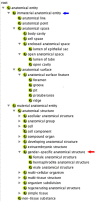
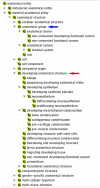
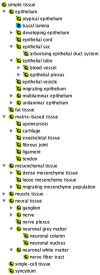
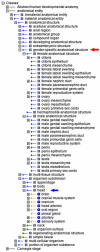
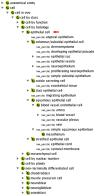
References
-
- Bard J. B. L. (2008). “Anatomical ontologies for model animals,” in Anatomy Ontologies for Bioinformatics, eds Burger A., Davidson D., Baldock R. (Springer: ), 3–25
-
- Burger A., Davidson D., Baldock R. (eds). (2008). Anatomy Ontologies for Bioinformatics. New York: Springer
-
- Haendel M. A., Neuhaus F., Osumi-Sutherland D., Mabee P., Mejino J. L. V., Mungall C., Smith B. (2008). “CARO, the common anatomy reference ontology,” in Anatomy Ontologies for Bioinformatics, eds Burger A., Davidson D., Baldock R. (New York: Springer; ), 327–349
LinkOut - more resources
Full Text Sources

